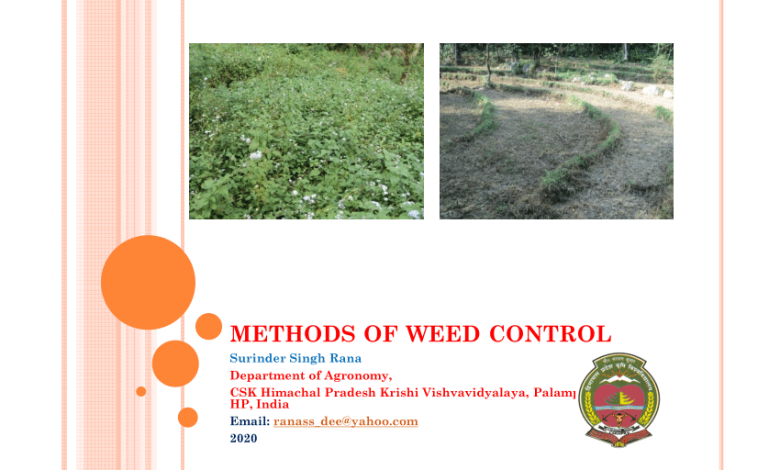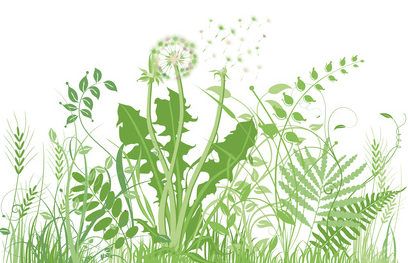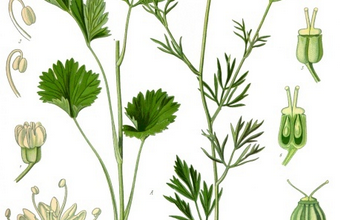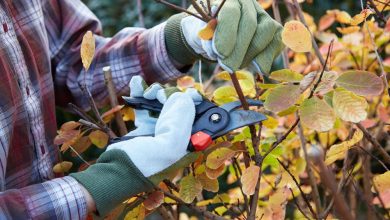Control weeds in the garden. Prevention is better than cure

In an organic garden, controlling the accompanying vegetation, that is, controlling weeds that grow alongside the vegetables, is one of the tasks that will take the most time throughout the entire cultivation cycle of the garden.

Weed or misplaced plant?
We call them “weeds” because they are not “the good ones”, the ones we have planted to take care of and then harvest, not because they are toxic to our crops or something like that. Any plant, however beneficial it may be, can turn out to be a weed if it is not in the right place.
For example, the Equisetum or horsetail is a magnificent ally to fight against fungi, but if you decide to cultivate it to make decoctions or other preparations that prevent or treat diseases, you must be very careful and isolate it conveniently, as this plant spreads widely. easily and it may be that, unwittingly, you find all the containers in your garden flooded with Equisetum. In that case, the plant, which was not a weed at first, will have become a weed.
Herbicides vs ecological methods
In conventional agriculture, herbicides are responsible for controlling weeds, but in an organic garden you should not use chemical products of this type, as we have already seen in the article « Organic farming and urban gardens «, but carry out a series of tasks that solve problems without compromising the stability of the soil or the health of plants and our own with chemical products such as herbicides.
Of course, the work involved in fighting weeds with ecological methods will be greater than if you apply a herbicide to the soil that kills all the weeds and forgets about them forever, but it will also be rewarding for you and your health. a true organic garden, and even the task of looking for weeds and removing them can be relaxing and de-stressing.
Control weeds vs eradicate them
The accompanying vegetation that grows in the garden competes with our crops for water, nutrients and other resources and can seriously slow down their development, but it also has benefits related to biodiversity (not only plants, but also beneficial insects and microorganisms for the soil).) and integrated pest and disease control (many of these plants can attract beneficial predatory insects or drive away some pests).
Therefore, your goal should be to control weeds so that their presence does not exceed that of the vegetables you grow and does not compromise their growth. As long as they do not invade your orchard or garden, they will not be a real danger to him, but you have to keep an eye on them so that there are as few as possible.
The best: Preventive techniques to control weeds
As in the fight against pests and diseases, the best way to control weeds is to prevent them from appearing or, at least, preventing them from appearing massively. Come on, the usual: prevention before cure.
Some of the preventive measures to control weeds that you can adopt in your organic garden are:
- Reduction of weed seeds in the soil: weeding is a good way to achieve this.
- Do not use fresh manure because there may be weed seeds in it. It is better to compost them, for example, because the high temperatures reached in the composting process will cause the death of the seeds, if any.
- Using a drip irrigation system will help you control weeds because the water will only soak the areas where your crops grow, preventing areas with unwanted plant seeds from being watered.
- Control the irrigation water, if it comes from ditches, ponds or tanks, so that it does not carry weed seeds.
- The “false sowing”: consists of watering the soil when it is ready to plant the plants in our garden but before doing so. This will make the weeds germinate in a few days and we will be able to eliminate them without confusing them with the seedlings of the “good” crops. Once the land has been removed and weeded, we can plant the vegetables without fear.
- Use the techniques of crop rotation and association.
- The padding of the land or mulching is a very useful practice in an organic garden. It consists of creating a barrier that prevents the growth of weeds by covering the surface of the substrate with a thick layer of organic matter or inert matter such as straw, grass clippings, leaves, sawdust, bark, gravel or industrial by-products. And in addition to weed prevention, mulching has other advantages, so we will dedicate an article to talk about this technique and how to carry it out.
Weed control or elimination techniques
The first option is always the manual removal of undesirable weeds that grow in the garden. You can also use gas burners to kill them, although this will be more expensive, and remember that cultural methods to eliminate weeds, such as weeding or tilling the soil, will prevent their roots from developing and will take them outside, although in In this case, you have to be careful not to uproot or damage the crops that you are interested in.
There are other newer techniques in the ecological fight against weeds such as biosolarization or disinfection of the soil with hot water vapor, we will talk about them in other articles.
I hope the article has been helpful to you, if you liked it, vote 5 stars If you want to know more about the weeds in the garden, in this link I leave you a post by Daniel about the most common weeds in the garden.



![Photo of Anthracnose: [Identify, Treat and Prevent this Fungus]](https://www.complete-gardening.com/wp-content/uploads/2022/08/anthracnose-identify-treat-and-prevent-this-fungus-390x220.jpg)
![Photo of Gooseberry: [Characteristics, Cultivation, Care and Disadvantages]](https://www.complete-gardening.com/wp-content/uploads/2022/08/gooseberry-characteristics-cultivation-care-and-disadvantages-390x220.jpg)